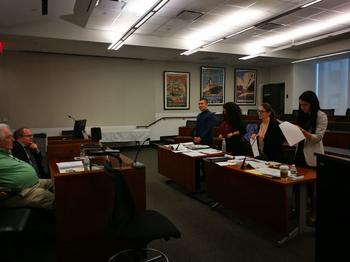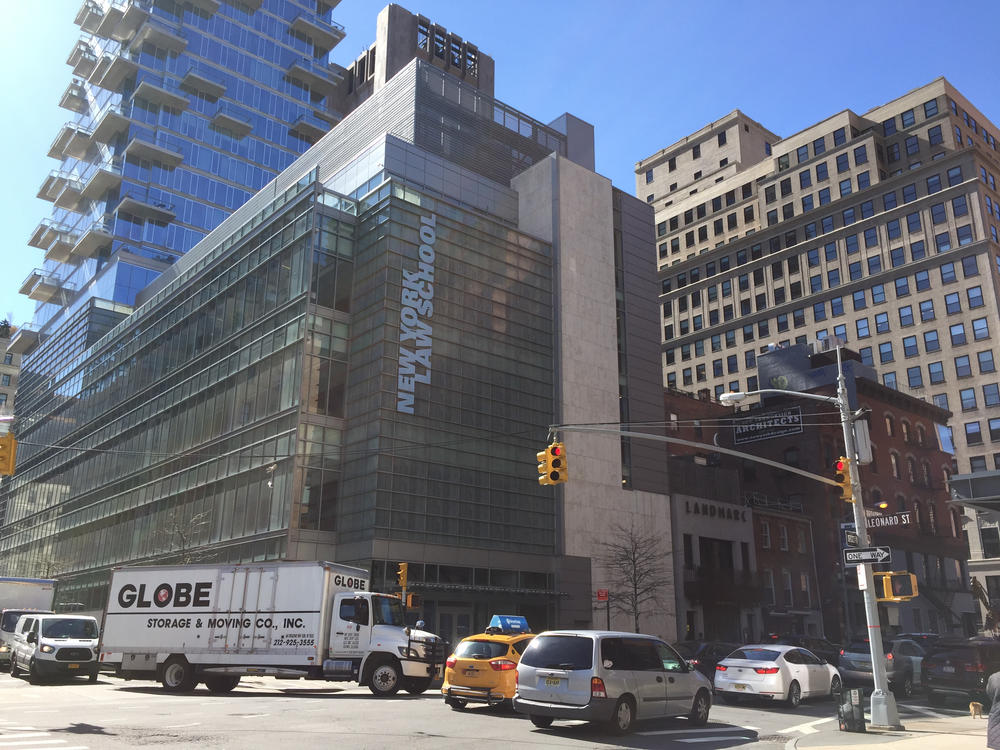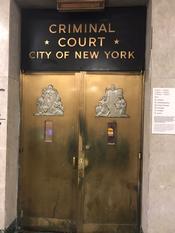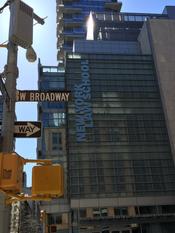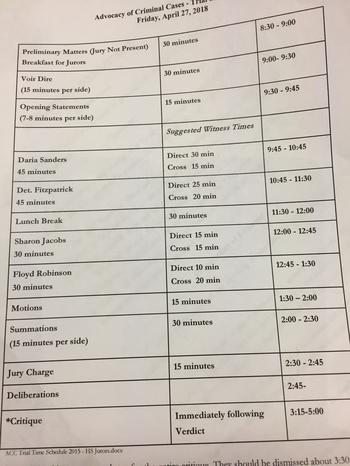Simulation Trials an der New York Law School (NYLS)
May 02, 2018
On the 26th and 27th of April, Prof. Momsen and team members of the FU Law Clinic – “Practice of Criminal Defense” attended simulation trials at New York Law School (NYLS). The multi-day trials were the final exam of the course “Advocacy of Criminal Cases” (ACC) that had been held during the last few months.
In a fictitious criminal process, second year students of NYLS took on the prosecution and the defense in teams of two. Alongside Professors of the NYLS, prosecutors of the New York District Attorney’s Office agreed to take on the role of the trial judge. The jury consisted of high school students, the roles of the defendant and the witnesses were played by professional actors.
The students had already performed the fictitious process at the beginning of the semester; these proceedings were recorded. With the aid of this material and the feedback of their supervisors (a prosecutor for the prosecution team and a defense lawyer for the defense team respectively), the students prepared for the main trial during the semester.
On the 26th of April, pre-trial hearings were held; without the presence of the jury, the parties made motions in limine in order to determine the range of evidence to be allowed during the main trial. On the 27th of April, based on the judge’s decision on the motions in limine, the main trial was held.
The subject of the trial was a theft. The defendant, Floyd Robinson, is supposed to have entered a flower shop, where Daria Sanders worked. Although it was a rainy day, his face was covered by dark sunglasses and a knitted cap. The perpetrator walked to the counter and, with his right hand in his jacket pocket he gave the impression he had a gun. He asked Daria to give him the contents of the cash register and Daria handed him $250.
After Daria had given the police a description of the perpetrator, Detective Fitzpatrick of the NYPD spotted a man fitting the description out on the street: A middle-aged Afro-American wearing a blue jacket with a white collar, sunglasses and a blue knitted cap. The suspect was brought to the NYPD to place him in a line-up where Daria identified him as the perpetrator.
However, the defendant explained he had an alibi for the time of the offense, as he had met his wife for lunch. She confirmed this version to be true.
In the main trial, the prosecution concentrated mainly on Daria’s identification of the defendant and argued that in her second job as waitressshe must remember up to 30 faces an evening; her identification of the defendant is therefore supposed to be especially trustworthy. Meanwhile, the defense argued that, because the perpetrator’s face was partly covered by the sunglasses and the knitted cap, it is possible that Daria was mistaken. They also showed that the distinctive blue jacket with the white collar that both the perpetrator and the defendant wore hadbeen sold over 10.000 times in New York City.
After deliberation, the jury in all trials decided on “not guilty” because, as they explained, they did find it probable that the defendant was guilty but a reasonable doubt as to his guilt remained,the grounds for the reasonable doubt beingthat the prosecution was not able to prove that the defendant was the actual person seen by Daria.
After the verdict, the teams received detailed feedback again.
It was very impressive to see how professional and rhetorically adept the students performed the prosecution and the defense in this early stage of their legal education.

